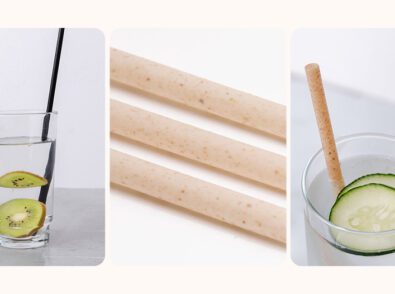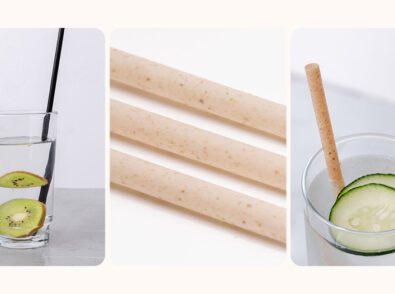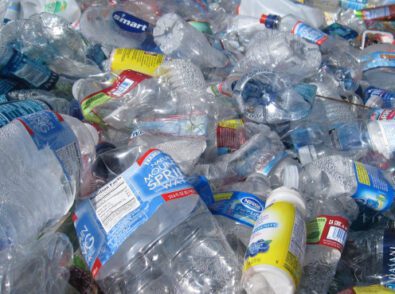How Will Bioplastics Change the Future for the Better?
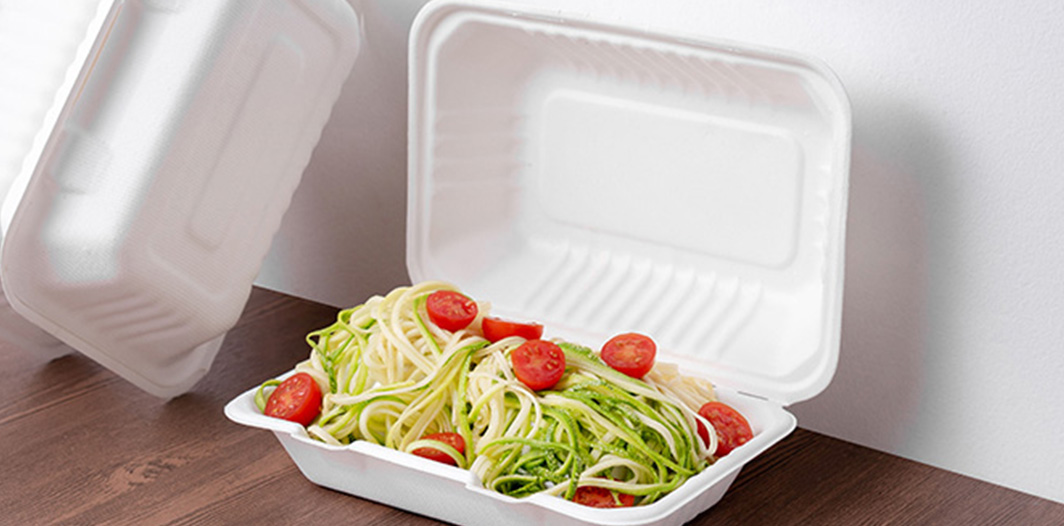
Today, all kinds of alternatives to conventional plastics are popping up in attempts to mitigate pollution, decrease greenhouse gas emissions, and create a more positive impact on the planet overall. One standout alternative is plastic made from plants, known in the industry as bioplastics. These organic plastics are derived from natural resources, giving them several eco-friendly benefits that put them a step above traditional plastics.
What Are Bioplastics?
Put simply, bioplastics are plastics made from renewable biomass materials, mainly bio-based polymers. Unlike traditional plastic, which is produced using petroleum-based raw materials, bioplastics are made of elements derived from natural gas, algae, wood, and various other types of organic matter. As a result, the types of bioplastics are organized into different classifications depending on what they’re made of and how they biodegrade.
It’s important to note that not all bioplastics are biodegradable. To be considered a bioplastic, the material must be made from biomass, biodegradable, or both. For example, bioplastics can be made from plant materials with the same chemical composition as petroleum-derived plastic, allowing them to be called “bioplastics” even though they aren’t biodegradable. At the same time, biodegradable bioplastics must be disposed of in certain conditions to ensure biodegradation—industrial composting is the typical method.
The Different Classifications of Bioplastics
Because bioplastics can feature components from many biomass sources, their production methods can differ. However, two highly common ways to create bioplastics involve polylactic acids (PLAs) and polyhydroxyalkanoates (PHAs). These bio-based polymers are melted, molded, and shaped into bioplastics.
Here is a quick breakdown of each polymer type:
- PLAs: PLA is a thermoplastic polymer extracted from plant starch through fermentation. For example, deriving PLA from corn involves separating out the cornstarch, combining the cornstarch with enzymes, and applying heat, which results in corn sugar. The sugar is fermented to create lactic acid, PLA’s central ingredient. The lactic acid is then polymerized, forming PLA resin to create bioplastic.
- PHAs: This polymer is produced through microbial fermentation, a natural process replicated in industrial settings to make bioplastic. In the process, bacteria convert feedstock into PHA—common feedstock includes algae and sugar, though some technology can now use sources like carbon dioxide as feedstock. The PHA production process can be altered to create various forms of bioplastic—such as soft and flexible or rigid—by making monomer adjustments.
Beyond PLAs and PHAs, manufacturers may use cellulose, protein, bio-polyethylene (ethanol), polyhydroxybutyrate (PHB), and various other bases to manufacture bioplastics.
Biodegradable vs. Compostable Plastics
Because biodegradation and composting are two separate concepts, biodegradable and compostable plastics are different.
When an item biodegrades, it goes through a natural process where bacteria and fungi aid the breakdown of organic matter. Comparatively, composting is a human-made technique that leads to biodegradation. While all compostable products are biodegradable, not every biodegradable object can be composted, as only certain materials are compostable.
When you take compostable plastic and compost it, you can expect it to break down through biodegradation in a specific amount of time. The biodegradation process on its own is less predictable. If biodegradable plastic can’t be composted, it requires specific disposal processes — placing biodegradable items in the trash is not recommended, as landfills have poor conditions for decomposition.
How Do You Dispose of Bioplastics?
The main determinant behind bioplastic disposal is which polymers were used to create it, as they can affect how everything breaks down.
The ideal conditions for biodegradation are heat, microbes, and oxygen. As a result, biowaste collection is often preferred for disposal—the bioplastic is taken to a special plant where it is turned into biowaste, which could then be used as compost, depending on the material, or for other sustainable means. These plants’ specialized conditions can guarantee biodegradation.
If bioplastic is non-biodegradable, recycling is the best option.
Benefits and Considerations of Bioplastics
With increased plastic production over the past several decades, plastic is more a part of our lives now than ever. While convenient, plastic is a massive environmental hindrance.
More than 20 million metric tons of plastic enter waterways yearly, leading to disastrous consequences for both humans and wildlife. Minimal amounts of plastic are actually recycled—about 9% worldwide—meaning most plastic ends up in landfills, where it can remain for hundreds of years before decomposing. Further, plastic production and incineration are significant contributors to global warming.
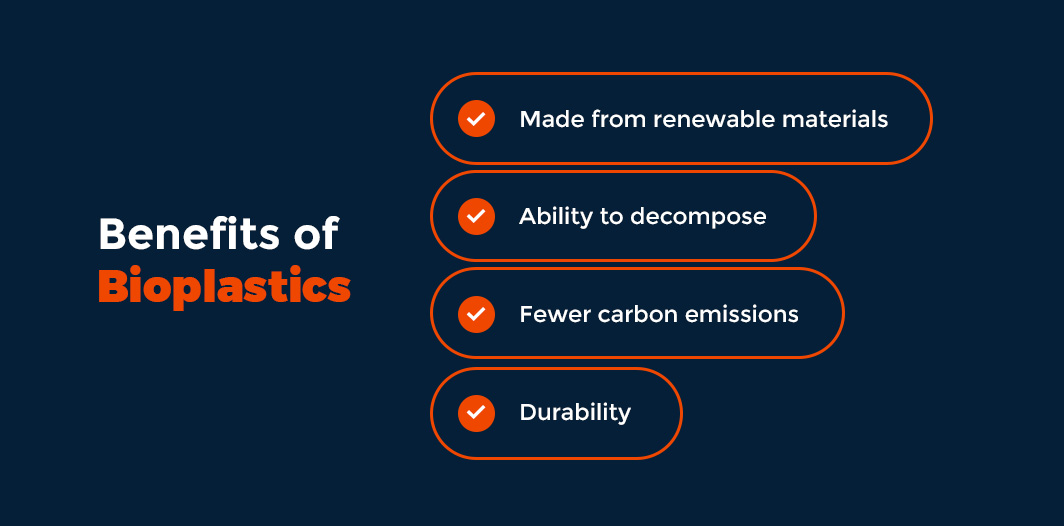
Benefits
With all that in mind, bioplastics have emerged as a potential solution to our plastic problem. There is no one-size-fits-all approach to fixing the effects of plastic on the environment, but bioplastics have many qualities that make them a promising option.
- Made from renewable materials: Bioplastics are more sustainable to produce because they are made from naturally recurring materials in the environment. Prioritizing bioplastics can help preserve finite resources.
- Ability to decompose: Most bioplastics biodegrade, meaning they decompose via microorganisms in the right conditions. This process can happen within a matter of weeks or months, which is a stark contrast to the decomposition timeline of traditional plastics. When disposed of correctly, the use of bioplastics can help curb plastic pollution.
- Fewer carbon emissions: These materials are derived from renewable biomass, not petroleum, which is the fossil fuel used to make traditional plastic and creates excessive carbon dioxide emissions. Alongside other biomaterials like biofuels, bioplastics are considered one of the most effective methods to mitigate global warming.
- Durability: Though conventional plastic is highly durable, bioplastics can be just as robust. Plus, because biodegradable bioplastics only decompose in specific conditions, they can be reused and recycled over time.
Considerations
Compared to traditional plastics, bioplastics present numerous benefits that make them a highly desirable sustainable alternative. However, bioplastics also come with certain limitations, and it’s important to understand their drawbacks to get a complete picture.
- Different characteristics: Namely, not all bioplastics are created equally. Each category of bioplastic has its own downsides. For example, PHAs can be expensive to produce, and protein-based bioplastics can be water-sensitive without the addition of biodegradable polyesters. These aspects will continue to be refined as manufacturers innovate bioplastics production technology and processes.
- Lack of disposal procedures: When dealing with biodegradable bioplastics, proper disposal is necessary and often requires industrial measures, including specialized machines and facilities. Otherwise, they cannot biodegrade, which defeats their purpose and renders them as detrimental as conventional plastics in terms of pollution. As bioplastics become more mainstream, it may become easier to correctly dispose of them to ensure biodegradation.
The Future of Bioplastics
Even with potential drawbacks and careful considerations surrounding disposal, the future of bioplastics is bright. As of 2023, global bioplastic patent filings are booming, particularly regarding PLAs, PHAs, and butylene-based polymers. This trend indicates more innovation surrounding bioplastics than ever, which is a positive sign for anyone interested in mitigating the effects of traditional plastic waste. As more companies dedicate time and resources to refining bioplastics processes and creating new products, bioplastics will increasingly become part of our everyday lives—particularly in the health care field and disposables.

Contact Us to Learn More About Alternatives to Conventional Plastics
As innovations continue in plant plastics, bioplastics represent an exciting and viable way forward. Greenprint replaces outdated oil-based disposables with ethical and sustainable alternatives, including 100% recyclable and compostable disposables made from plant fibers and advanced natural polymers.
From straws to cutlery to plates, our one-of-a-kind products are perfect for your restaurant or foodservice establishment. Through our diverse product lines, you can find durable, eco-friendly items that help you comply with regulations, all while satisfying customers with well-made disposables.
Ready to get started? Shop our products today, or reach out to our sales team to schedule an appointment.
References
- https://www.nature.com/articles/s41578-021-00407-8
- https://www.ncbi.nlm.nih.gov/pmc/articles/PMC10032476/
- https://www.sciencedirect.com/science/article/abs/pii/S0141391020301737
- https://www.ncbi.nlm.nih.gov/pmc/articles/PMC9797907/
- https://pubs.acs.org/doi/10.1021/acs.accounts.2c00129
- https://leap.unep.org/en/content/basic-page/plastics-pollution-toolkit-about
- https://ourworldindata.org/plastic-pollution
- https://www.eia.gov/energyexplained/energy-and-the-environment/where-greenhouse-gases-come-from.php
- https://www.ncbi.nlm.nih.gov/pmc/articles/PMC8348970/
- https://appleyardlees.foleon.com/igipr3/inside-green-innovation-progress-report-third-edition/bioplastics
- https://www.medicalplasticsnews.com/medical-plastics-industry-insights/medical-plastics-materials-insights/an-introduction-to-bioplastics-in-medical-applications

